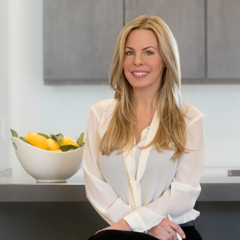I was in the checkout line at Safeway in Oro Valley contemplating the rising cost of living (Hershey bars in particular- as I had just hastily thrown one onto the conveyor belt as a last minute purchase). A woman in line next to me just a little older than my parents chuckled when I commented that the fact the chocolate was on sale factored into my purchase. She told me when she was a kid in the 1940s Hershey bars cost a nickel- and most places now they go for about a dollar if they are not on sale. Naturally, it got me to thinking about the cost of real estate (yes, ok-Jay and I are bit of a real estate nerds-we think about real estate all the time). I was born in the 70’s, so I thought for the heck of it I would see what the average cost of homes in the 1970’s was. According to US Census Bureau data, the average price of a house in 1975 was $39,500. Then I found a cool online inflation calculator and determined that $39,500 would equal $174,991.61 in today’s money. Hmm… while inflation sure has changed the value of the dollar- house prices (with inflation) don’t seem to be that far off what the average Tucson house cost is now. According to the Long Realty Market Report for Metro Tucson- “median price of sold homes was $166,000 for the month of October 2014, up 7% from October 2013”. (In Oro Valley it is hovering around the 240 range.)
I also started to think about the interest rate and was curious about how that affected buyer purchase power. Now, since the average wages were much less than they are now, and calculating that in with the changing home prices and inflation would start to go down a little bit of a bunny trail- I thought by just showing an example of what a loan payment would look like through the years based on a $200K mortgage would look like. Luckily- Freddie Mac already calculated this and KeepingCurrentMatters.com had it all packaged up prettily.

Wow! For anyone who thinks that a slight jump in interest rates are not a big deal- I would venture to guess that the average homebuyer would disagree. The discrepancy in monthly payment between a mortgage with 1980’s rates and now? Almost $1200 a month on a 200K mortgage. That is enough to lease a Jaguar F-type convertible and drive it to $450 bucks worth of fancy dinners a month. Or- put that $1200 into a savings account (around .80%- compounded daily) every month and at the end of your mortgage you can celebrate with an extra $488,411.00 and a paid off house. (or you could just be cheeky and buy millions of Hershey bars- but the cost of them in 30 years will be up, too!) See how buying a home at the right time in history and capturing a super rate is a BIG DEAL?
Prices of homes are still very good now- but rates are insanely low. Eventually- these rates will have to go up- maybe (hopefully!) not to the heights in the 80’s, but they will rise somewhat. If you have been thinking of buying a house- this is probably one of the best times historically to do so. Don’t be the one to say to your peers in 2020 “Gee, I wish I would have bought before rates went up.” And if you are thinking of refinancing your home- good grief, call up some lenders today to see if it will help you save cash every month. Don’t wait—time really can be money!



Leave a Reply